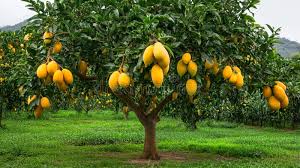Indian royals have long been associated with the cultivation of lush orchards, showcasing their appreciation for horticulture and the natural beauty of fruit-bearing trees. Here are some notable orchards historically maintained by Indian royalty:

1. Mysore Palace Orchard (Mysore, Karnataka)
The Wadiyar family of Mysore actively nurtured a legacy of horticulture. They developed the royal gardens of Mysore Palace and Lalitha Mahal Palace with great care, planting exotic fruit trees like mango, guava, and various citrus species.
2. Udaipur Royal Orchards (Udaipur, Rajasthan)
The Mewar royals of Udaipur took pride in their sprawling gardens and fruit orchards. The Sajjangarh (Monsoon) Palace housed a rich collection of trees, including pomegranates and citrus varieties. Additionally, the gardens near Lake Pichola flourished with lush vegetation and royal landscaping.
3. Nizam’s Mango Orchard (Hyderabad, Telangana)
What once served as stables for the Nizam’s horses has transformed into a 400-acre mango orchard. It now cultivates over 460 rare mango varieties, continuing the Nizam dynasty’s commitment to botanical innovation and agricultural excellence.
4. Gaekwad Orchards (Vadodara, Gujarat)
The Gaekwad family of Baroda enthusiastically maintained extensive gardens around Lakshmi Vilas Palace. They filled these orchards with mango, custard apple, and guava trees, turning the grounds into a testament of their love for nature.
5. Patiala Royal Orchards (Patiala, Punjab)
The royal family of Patiala deeply valued gardening. Around the Sheesh Mahal, they planted apple and citrus trees alongside vibrant flower gardens. Their orchards gained fame for their scenic beauty and horticultural diversity.
6. Kashmir Royal Orchards (Srinagar, Jammu & Kashmir)
The Maharajas of Kashmir cultivated flourishing orchard within their legendary gardens. Shalimar Bagh, for instance, featured terraces lined with fruit trees such as apples, apricots, and cherries—perfectly suited to the region’s cool climate.
7. Gwalior Royal Orchards (Gwalior, Madhya Pradesh)
The Scindia dynasty of Gwalior prioritized horticulture in their royal estate planning. Surrounding Gwalior Fort, they grew mango, citrus, and pomegranate trees, along with a range of herbs and medicinal plants for both culinary and therapeutic use.
8. Rajput Orchards (Jaipur, Rajasthan)
In Jaipur, the Rajput royals developed stunning orchards within gardens like Sisodia Rani Bagh and Ram Niwas Garden. These sites featured mango, papaya, and pomegranate trees, while the broader royal estates cultivated bananas, guavas, and citrus fruits.
9. Kochi Royal Orchards (Kochi, Kerala)
The Maharajas of Kochi harnessed Kerala’s tropical climate to grow orchard filled with bananas, coconuts, and jackfruit. They also cultivated spice plants like cardamom, cinnamon, and pepper, further enriching their estates with regional flavor.
Each of these royal orchard served more than just agricultural purposes—they symbolized grandeur, self-sufficiency, and a harmonious bond with nature. Many of these green havens still survive today, drawing visitors and historians alike who wish to experience the living legacy of India’s royal horticultural traditions.



